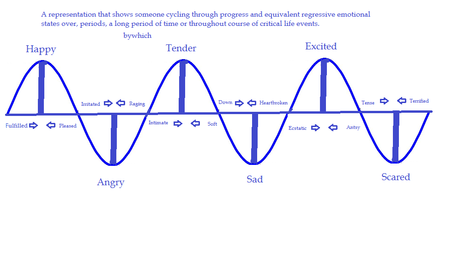Exploring Human EmotionIt is interesting that the English language offers over 3,000 words to describe human emotions. What is even more interesting is that someone, who can access the full range and depth of their emotions, will behave differently than someone who cannot. So many words exist in English and other languages to describe emotions, because the human capacity to feel is actually a spectrum of broad emotional states and micro-emotions. After all, words are simply a means of boxing our feelings, so we can describe them.
Narrowing the focus to a handful of emotional states, it is possible to understand the width of the emotional spectrum of the human mind. Happy, excited, tender, scared, angry, and sad serve as adequate descriptors of our most fundamental emotional states, though other descriptors can easily be substituted when they cover the broad range of human emotions. The fundamental states, in turn, can be broken down into narrower states accordingly; Happy: Fulfilled, Contented, Glad, Complete, Satisfied, Optimistic, Pleased Excited: Ecstatic, Energetic, Aroused, Bouncy, Nervous, Perky, Antsy Tender: Intimate, Loving, Warm-Hearted, Sympathetic, Touched, Kind, Soft Scared: Tense, Nervous, Anxious, Jittery, Frightened, Panic-Stricken, Terrified Angry: Irritated, Resentful, Miffed, Upset, Mad, Furious, Raging Sad: Down, Blue, Mopey, Grieved, Dejected, Depressed, Heartbroken Clearly, people cycle through these emotional states on a momentary, daily, seasonal, and yearly basis. As such, an even more useful way of understanding these emotions would be to visualize these various feelings as an actual spectrum where all these emotional states and sub-states can be included, along with all the unmentioned micro-emotional states. As we cycle through our broad range of emotions, i.e. progress or regress, it is important to recognize most people experience a narrower range of micro-emotions in each emotional state than this modeling suggests. Accordingly, some individuals might experience such a narrow micro-emotional range that their emotional spectra look more like discrete sets of the fundamental emotional states. Meanwhile, a certain segment of the population may not even experience a complete set of the fundamental emotional states. This explains why on a regular basis some individuals, who might be happy one moment, suddenly become angry. These people do not experience the emotions in between the fundamental states, thus they cannot express emotions most other people can. Furthermore, an individual may cycle through some of the emotional states and micro-emotions more quickly than the other states, i.e. a higher frequency for some states, while the ordering of the states may differ for different individuals. After all, people often react to the same scenario in very diverse ways. At the same time, individuals tend to experience different feelings at different times when trying to cope with a given scenario. There are even those who erratically cycle through different emotional states, i.e. the emotionally unstable. Finally, behavior, including thought behavior, is influenced by circumstance and personality. A person in an unhealthy environment may gravitate toward the sad or angry areas of their spectrum, i.e. exhibit a depressed or violent persona; whereas, the essence of their personality may gravitate toward the more happy end of their spectrum. As such, this simple modeling of human emotion offers us a chance to understand how and when someone's circumstances are influencing his, or her, behavior. Moreover, viewing human emotions as a spectrum helps us better understand emotions and people. |
|


